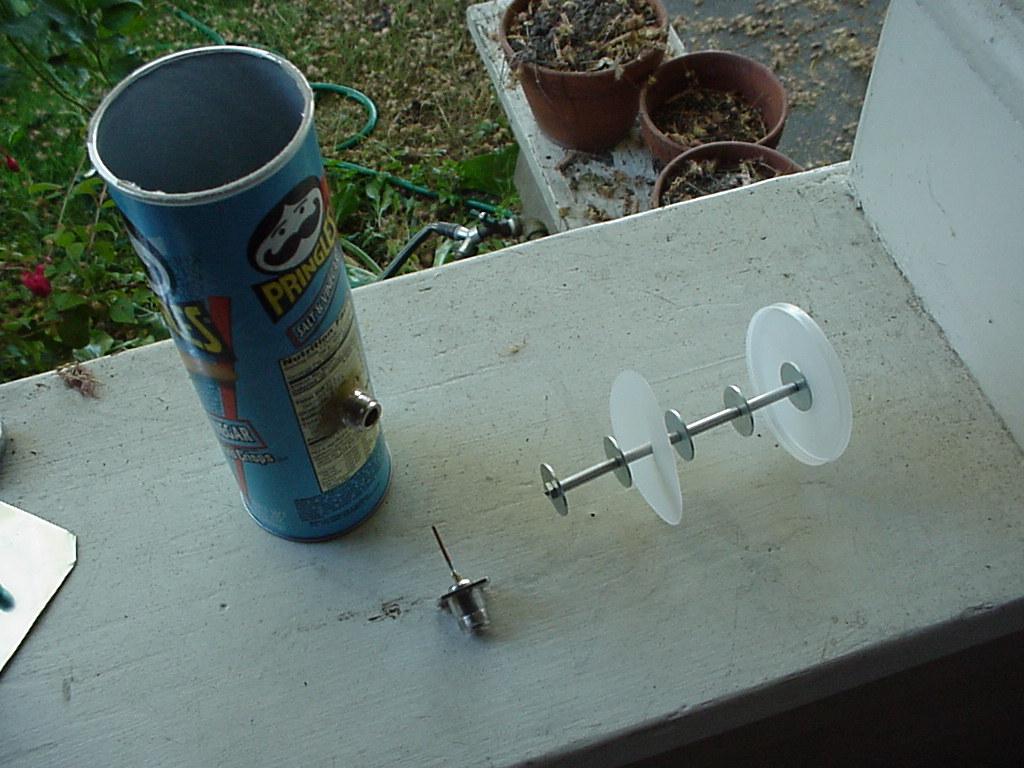

I drilled the hole and painted the can with assistance from Chris. After these failures both decided on using a Pirouline can and complete it together in the classroom. I tried using a 3.0″ diameter, 12″ long drain pipe and Chris used a Bushes Baked Beans can. Both of our first attempts were a failure. Our final test that day for grade was a signal strength of -78 at around 300 feet.Įven though this was a group project we decided to start out by creating our own Cantenna’s individually since we had difficulty meeting up. This time are base line was -84 using the WAP’s antenna and after our Cantenna was hooked up again our readings came in a lot better at -77 to -78. After replacing and adjusting the way the radiator was seated a tiny bit we tested again.

On the following Saturday we met up again outside the classroom for testing. At this point we thought we might make some adjustments to the Cantenna and try testing again at a later date. After hooking up our Cantenna our first readings were around -81 or -82. Our base line signal strength for the first test was -80 at around 300 feet using the WAP antenna. We tested outside the classroom using a Wireless Access Point (WAP) and a laptop at a distance of around 100 yards(300ft). After the can was painted we inserted the radiator and proceeded to run some tests. Since the lid just popped off this can, we did not need to make any other modifications to it except some paint for looks. Once the hole was drilled we filed down the edges so that we could safely insert the radiator. Based on the information we drilled a 5/8 inch hole in our can 1.47 inches from the rear of the can. Here is a list of the tools & materials we use to complete out project.įirst thing we did after choosing our can was run the calculations through the Cantenna Calculator. Inches – Your can should be this long or longer Inches – This is how far you mount your connector from the rear of the can MHz – Must be greater than 2462 for 802.11b/g MHz – Must be less than 2412 for 802.11b/g As you can see the highest Usable Frequency is well below the 2462 MHz needed.Įnter Can Diameter in inches: Lowest Usable Frequency with this can Yet, after it’s been constructed the can works great. Which means according to the scientific principals involved, a certain size can, shouldn’t work based on the information from the Cantenna Calculator. Some people refer to this as the “Magic Factor”.

Granted there are scientific principals at work here and the calculator is a great tool to help you build a successful Cantenna, it doesn’t mean you can’t work outside the box a little and still build a successful Cantenna. However, after doing our research we choose to go with a can that was outside of the perimeters of the calculator. We utilized a Cantenna Calculator to help us choose what size and type of can we wanted to use. We did several searches on the internet to find out as much information as possible about making a Cantenna’s. Chris Milton is my partner on this project and this is what we did.

This project is to be completed with a partner. The Radiator is a special device that the instructor will provide and be used to transmit the wireless signal from the can. The project consisted of researching and building a (Cantenna) wireless antenna using a can and a radiator. This is a project that I completed for my IT103 Networking class.


 0 kommentar(er)
0 kommentar(er)
